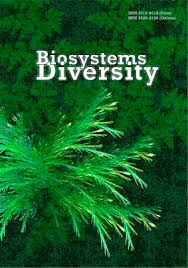Parasites of domestic and wild pigeons in the south of Ukraine
Parasites of domestic and wild pigeons in the south of Ukraine
Author(s): M. BogachSubject(s): Geography, Regional studies, Health and medicine and law, Sociobiology
Published by: Дніпропетровський національний університет імені Олеся Гончара
Keywords: trichomonosis; cestodes; nematodes; epizootic process; distribution;
Summary/Abstract: Pigeons are closely related to human life and are both a source of food and object for hobbies and sports. Parasitic diseases of birds are the main reason for their growth retardation, reduced productivity and viability. The article presents the results of studying the prevalence of trichomonosis, cestodes and nematodes among the population of wild and domestic pigeons in the south of Ukraine. According to the results of the conducted researches it is established that in the south of Ukraine endoparasitoses of domestic and wild pigeons are quite widespread, and all species of this bird are carriers of Trichomonas gallinae. At the same time, the highest rate of Trichomonas infection was recorded in Columba palambus and C. livia domestica, and the overall infestation of males is higher by 4.4% compared to females. It was determined that domestic pigeons C. livia domestica were infested with trichomonosis (27.5%) and nematodes (Ascaridia columbae, 57.1%), C. palambus – trichomonosis (32.1%) and cestodes (Raillietina spp., 82.4%), Streptopelia turtur – cestodes (Raillietina spp., 12.5%) and S. decaocto – cestodes (Raillietina spp., 71.4%) and nematodes (Heterakis gallinarum, A. columbae – 33.3% and 44.4% respectively). The overall rate of infestation of pigeons with cestodes was 28.4% and the incidence in males was higher by 3.9% compared to females. It was found that the most common species among pigeon cestodes is Raillietina spp. In addition, 22.9% of pigeons are carriers of nematodes (H. gallinarum, A. columbae and Capillaria spp.). Continuous monitoring of pigeon parasites is necessary because they, in most cases, come into contact with other species of poultry and are a source of general invasion. In terms of further research, it would be promising to study the prevalence of helminthic infestation among wild migratory birds.
Journal: Biosystems Diversity
- Issue Year: 29/2021
- Issue No: 2
- Page Range: 135-139
- Page Count: 5
- Language: English

